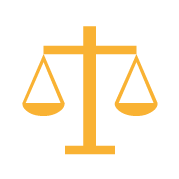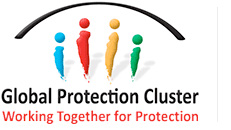PROTECTION OF CIVILIANS

Effective dialogue and interaction between humanitarian and military actors (including UN peacekeeping missions, stabilization forces and regional military arrangements) have sometimes been hampered by concerns on the part of humanitarian actors about the impact that closer association may have on their ability to operate in an independent, neutral and impartial manner and be perceived as doing so.
However, humanitarians have also long recognized that humanitarian action alone cannot protect civilians from the effects of armed conflict. Military actors may be able to enhance the physical protection of civilian population. They may also be able to contribute to a security environment conducive to the provision of humanitarian assistance. In addition, for instance, peacekeeping missions and humanitarian organizations may undertake activities that compliment protection cluster’s response in the areas, for example, of mine action, child protection, etc. Protection clusters in countries where there is a peacekeeping mission can contribute to the development of the mission’s protection strategy and facilitate coordination with mission’s counterparts. Thus, some degree of interaction and dialogue between these different actors is essential for improving and strengthening their respective protection response. The modality and degree of interaction between humanitarian and military actors differ according to the operational contact
Field protection clusters have signaled to the Global Protection Cluster (GPC) the need for guidance to address the challenges they face in interacting with peacekeeping and military actors. In response, the GPC is currently developing a guidance note. A separate workstream has also been established for civil-military coordination for protection overcomes. Further guidance on interaction between humanitarian actors and international military actors will also be available in the forthcoming revised ICRC Professional Standards for Protection Work.
Humanitarian and protection actors can seek to influence the nature of the protection mandates that are assigned to peacekeeping missions by the Security Council. The GPC and field protection clusters participate in the inter-agency coordination mechanisms facilitated by OCHA and regularly update the UN Security Council Informal Expert Group on key protection issues in countries considered by the Council.



PEACE KEEPING MISSION
- DPO Policy on The Protection of Civilians in United Nations Peacekeeping
- Accountability and Fact-finding Mechanisms for Violations of International Humanitarian Law and Human Rights Law
- Framework for Drafting Comprehensive Protection of Civilians Strategies in UN Peacekeeping Operations
- Diagnostic Tool and Guidance on the Interaction between Field Protection Clusters and UN Missions
- UN Integration and Humanitarian Space
- Protecting Civilians in the Context of UN Peacekeeping Operations


IHL
- Access to Safety and Provision of Humanitarian Support for Persons at Checkpoints or Transit Facilities
- Protection Considerations for People living Along the Contact Line
- Aide Memoire
- Aide Memoire on Return
- Briefing Note on Freedom of Movement in Eastern Ukraine
- CAR Orientation Evacuation Des Civils. Fr.
- IASC Frequently Asked Questions on International Law, Human Rights and Refugee Law in the context of Armed Conflict
- Access to Safety for Internally Displaced Persons
- Impact of Ceasefire on Civilians
- Khanaqin Forced Encampment and Returns
- Protection Guidance On Evacuations in the West Mosul
- Statement on Sponsorship Procedures Implemented By Military And Local Authorities
- Minimum Standards for Participation in Humanitarian Inter-agency Evacuations
- UNHCR Protection Brief: Security Screening of IDPs
- International Humanitarian Law: Answers to your Questions, ICRC, 2016
- The Basics of International Humanitarian Law, ICRC, 2018
- IHL Treaty Database, ICRC
- Customary IHL Database, ICRC.

CIVIL-MILITARY COORDINATION WORKSTREAM
CONTACT
Caroline Dulin Brass
Senior Legal Officer
dulin@unhcr.org
